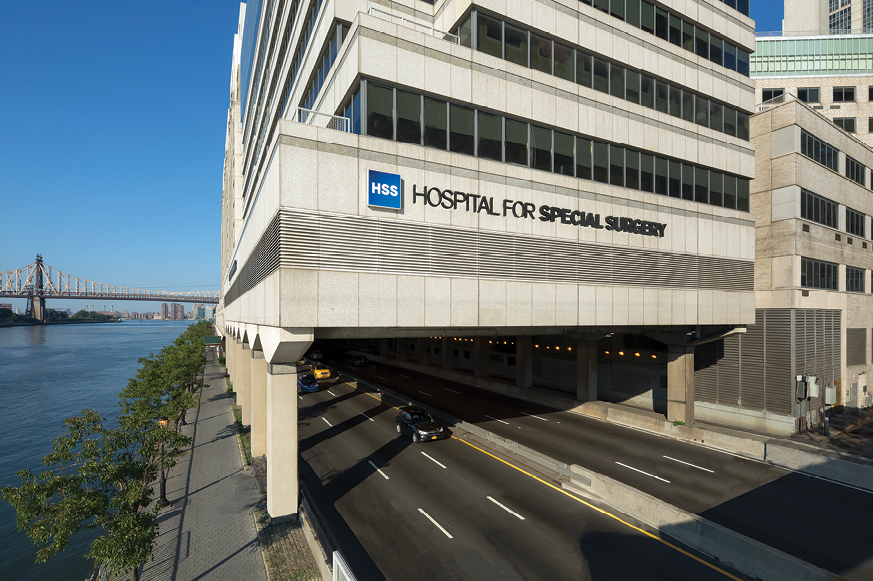- Home
- Media Kit
- MediaJet
- Current Issue
- Past Issues
- Ad Specs-Submission
- Ad Print Settings
- Reprints (PDF)
- Photo Specifications (PDF)
- Contact Us
![]()
ONLINE
![]()
ONLINE

Transformational Leadership
Editors’ Note
Lou Shapiro assumed the role of President and Chief Executive Officer of HSS in October 2006. After 17 years of leading the institution, he will be retiring as CEO later this year. Previously, he served as Executive Vice President and Chief Operating Officer of Geisinger Health System’s Clinical Enterprise. He began his career at Allegheny General Hospital in Pittsburgh and then joined McKinsey & Company as a leader within their healthcare practice. Shapiro is a fellow of the American College of Healthcare Executives, former Chair of the Greater New York Hospital Association Board of Governors (2014-2015), and serves on multiple nonprofit boards.
Institution Brief
HSS (hss.edu) is the world’s leading academic medical center focused on musculoskeletal health. At its core is Hospital for Special Surgery, nationally ranked number one in orthopedics (for the 13th consecutive year) and number three in rheumatology by U.S. News & World Report (2022-2023), and named a leader in pediatric orthopedics by U.S. News & World Report “Best Children’s Hospitals” (2022-2023). HSS recently announced that Bryan T. Kelly, MD, MBA is succeeding Louis Shapiro in a phased transition over the course of 2023, marking the first time a surgeon has led the 160-year-old academic medical system. HSS has a main campus in New York City and a growing network of related facilities. In addition to patient care, HSS leads the field in research, innovation, and education. Through HSS Global Ventures and the HSS Education Institute, the institution is collaborating with medical centers and other organizations to advance the quality and value of musculoskeletal care and to make world-class HSS care more widely accessible nationally and internationally. HSS is the official hospital for a number of professional sports organizations and teams including the New York Giants, New York Mets, New York Knicks, Brooklyn Nets, UFC, US Rowing, US Biathlon, US Lacrosse, and USA Basketball. HSS is one of only three hospitals in the United States designated as a Medical Center of Excellence by FIFA.

HSS main campus on Manhattan’s East Side
How does HSS today compare to the day you arrived in 2006?
Over the past 17 years, I have had the privilege of leading through transformational change that has seen HSS grow from a specialty hospital on the Upper East Side of Manhattan to the world’s leading musculoskeletal network.
When I first joined the organization in 2006, we were only located in New York City with 174 physicians performing just over 18,000 orthopedic surgeries that year. Despite the smaller size, HSS was still a leader in the field and I was excited to lead the organization in its next chapter, building upon the strong foundation that already existed.
Although it looked different on the outside, the HSS I joined almost 20 years ago demonstrated the same commitment to excellence as today, and that it has had since its inception 160 years ago – excellence in research, teaching, innovation, and world-class musculoskeletal care – all of which are fueled by the first-rate physicians and employees that pass through our doors every day.
Since 2006, we have been able to harness these strengths to build the global network we see today. With more than 20 HSS locations, 230 members in our physical therapy network, 2,000 alums, and 37,500 surgical cases in the past year alone, HSS has transformed into a true musculoskeletal ecosystem – and is positioned to continue this growth for many years to come.

Rendering of the new Anna-Maria and Stephen Kellen Tower
What are the most significant leadership lessons from this transformation?
Reflecting on HSS’ transformation over the past 17 years, three key lessons come to mind:
Number one: true leadership entails that we never take our eye off of the fundamental things that make HSS, HSS. Those things are our superior quality, advanced patient experience, cutting-edge research, commitment to education, and focus on innovation. Constantly building upon and elevating the things that we are best at enables HSS to be the leader we are today.
Number two: true leadership is attained when every single person is a leader, regardless of their role or title. At HSS, this philosophy is known as Leadership by All. Everyone at HSS feels the confidence and support to lead at what they do best, and we always strive to be better tomorrow than we were yesterday and today.
Number three: our people. We are proud to have some of the most skilled clinicians in the world practicing at our institution, and a team of dedicated employees who are committed to our shared purpose. Our leadership position today relies upon our ability to make HSS the best environment for our clinicians to practice and the best environment for professionals to grow and develop their careers.
Is the current healthcare environment more or less conducive to change than what you saw a decade ago?
In my experience, the only constant in the healthcare environment is change. Comparing the healthcare landscape 10 years ago to today, we have seen the emergence of new trends and the continuation of others that stand to transform the industry.
Over the past decade, we have seen an uptick in hospital mergers and acquisitions as large incumbent players seek to realize cost savings and care delivery synergies through scale. We have also seen the rise of new “front doors” to care, powered by technological advancements that have made digital and virtual care a reality and retail clinics that promise convenient, timely access to care for consumers. Additionally, we are seeing new companies from non-traditional sectors enter the healthcare space faster than ever, disrupting the status quo and changing the competitive landscape. Last, but certainly not least, the onset of the COVID-19 pandemic in 2020 caused significant disruption for healthcare organizations across the nation – many of which continue to recover today.
These trends are challenging for all, and signify a massive opportunity for some. For HSS, today’s environment is a call to action. With 160 years of institutional knowledge and leadership in our field, HSS will continue to leverage our core strengths to evolve for the future – setting the standard for innovation and excellence in musculoskeletal health along the way.
Is the lesson of culture as strategy practical in the M&A environment prevailing in healthcare today?
At HSS, our philosophy is that culture is a strategy in itself. This strategy is brought to life in many ways. At the core of our culture is our shared purpose, which is lived and felt by every member of the organization. It is to help people get back to what they need and love to do better than any other place in the world. Working in conjunction with our purpose are our core values and commitment to Leadership by All. Our unique culture is what has enabled HSS to attain our leadership position today, and it is what will lead us into the future tomorrow.
The increase in mergers and acquisitions in the healthcare landscape today teaches us that culture is a crucial part of organizational strategy. In recent years, culture has emerged as one of the dominant barriers to effective integrations. Some estimates place the rate of failure due to culture-related issues as high as 30 percent. Now more than ever, it is vital to adopt a culture-first strategy – whether in the context of an M&A, joint venture or new partnership.
What do you hope your legacy at HSS will be?
I hope my legacy is one of transformational leadership. Throughout my tenure as President & CEO of HSS, I have had the privilege of leading this exceptional institution through periods of immense change alongside a gifted group of colleagues.
During my time as CEO, we experienced one of the biggest and most challenging healthcare events in history – the COVID-19 pandemic. We went from caring for orthopedic patients at scale to shutting down our core business and turning into a COVID hospital virtually overnight. We had the same staff and the same facilities. For me, and I am sure many others, this change was both frightening and inspiring. As daunting as this change seemed at the time, every single member of the HSS community rallied toward our shared purpose, and I believe we came out stronger on the other side.
The pandemic is one example in a decades-long history of leadership that I have had the honor of developing and building upon. I have had the privilege of leading HSS through its very first spin-out venture – RightMove Powered by HSS – a first-of-its-kind virtual physical therapy platform that will change the face of musculoskeletal care delivery. We have expanded HSS’ capabilities as a data-driven organization, establishing the Center for Analytics, Modeling, and Performance to accelerate HSS’ influence through advanced data capabilities and insights. Under my tenure, we have entered new markets and expanded our footprint in existing ones to bring HSS to more patients, in more places – Florida being one recent example of this growth. I am immensely proud of everything we have accomplished in the past 17 years and look forward to everything that the future has in store for this world-class organization.
What do you see for yourself in your next chapter?
Retiring from HSS is bittersweet, but I am eager to seeing what the future has in store. While I am certainly not retiring from my professional life, I will be prioritizing greater balance, spending more time with family, and focusing on other personal interests.
The amount of work to improve our nation’s healthcare system is tremendous, and I look forward to contributing to helping with the transformational change that is needed.![]()